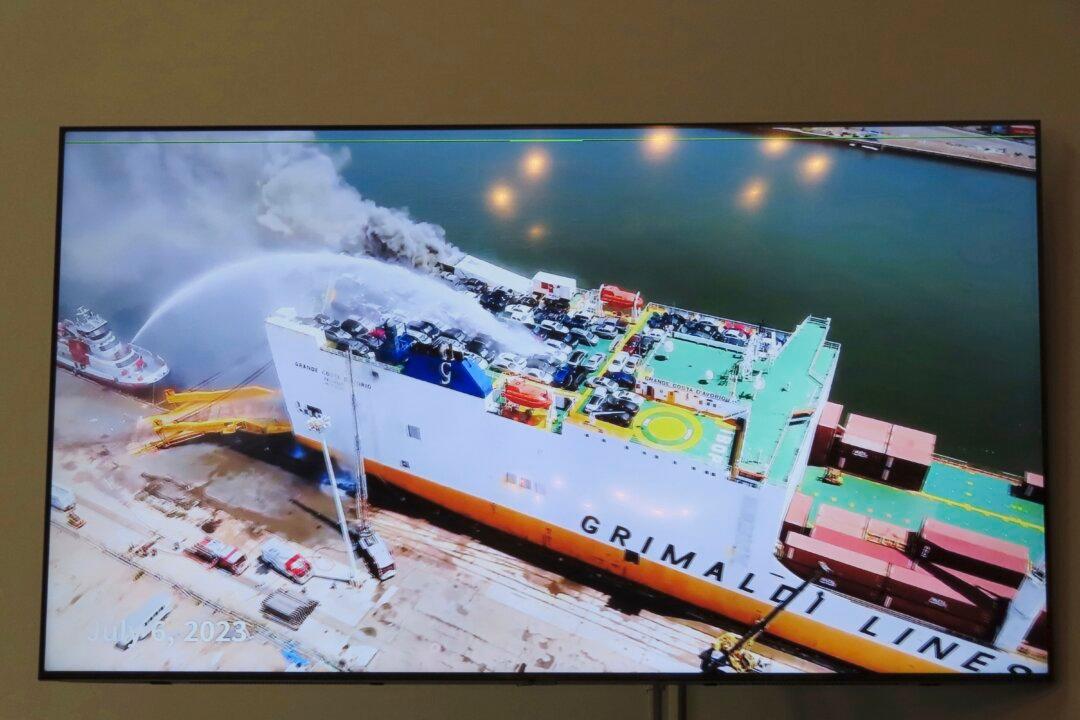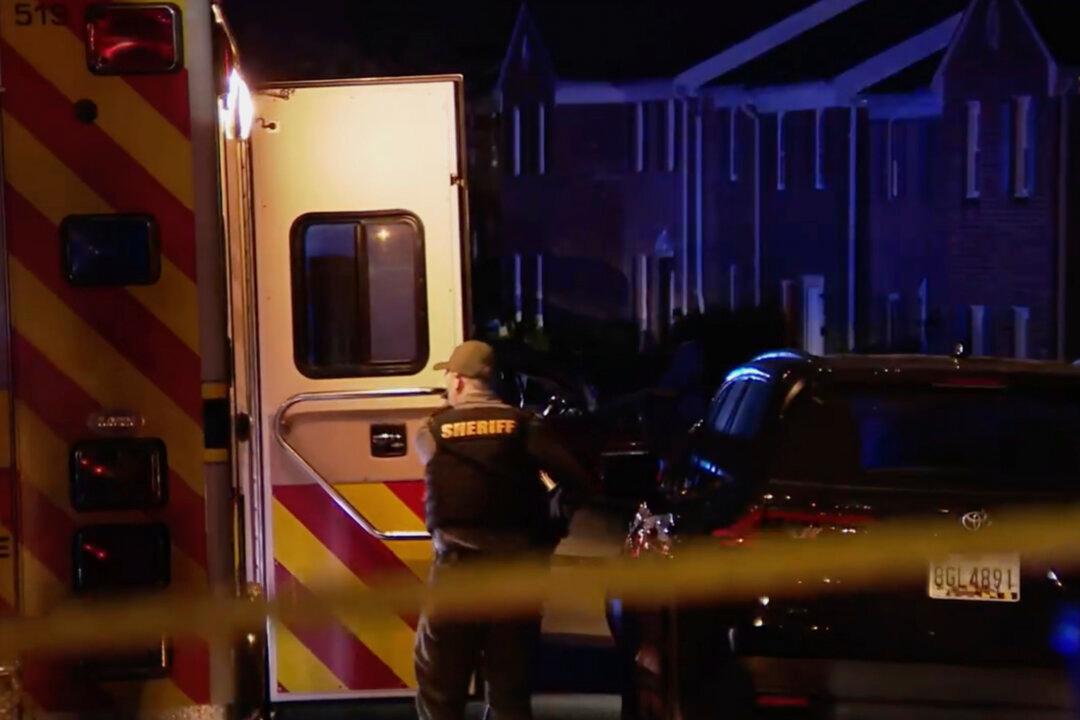UNION, N.J.—The Grande Costa D’Avorio cargo ship was being loaded with 1,200 West Africa-bound cars at Port Newark last July when a deadly fire began. Dense black smoke limited visibility to about 3 feet, and the floor was so hot it made the soles of a firefighter’s boots begin to peel off.
“We cannot find our way out!” Newark Fire Capt. Augusto “Augie” Acabou yelled into his radio as he tried to fight the growing blaze. “We are lost!”
Those words touched off a frantic scramble to find Acabou and fellow Newark Fire Department Capt. Wayne Brooks Jr., who had become disoriented in the heat, smoke and darkness—an effort that was plagued by confusion, adrenaline, panic and a shortage of personnel and equipment.
By 3 a.m. the next day, Acabou and Brooks would be dead.
Now, the U.S. Coast Guard and the National Transportation Safety Board are among numerous agencies trying to determine what went wrong on board the ship, an effort not only to determine what happened the night of July 5, 2023, but also to try to learn from it and prevent others from dying under similar circumstances in the future.
Investigators, port workers and ship crew members testified this week at an investigative hearing in New Jersey that will continue into next week. This account is based on that testimony.
The fire began around 9 p.m. when a Jeep Wrangler being used to push the mostly inoperative vehicles up steep ramps of the 12-level ship caught fire, causing a port worker to jump out the driver’s door and run for portable fire extinguishers that quickly proved inadequate.
The Newark Fire Department responded first to the blaze. About 45 minutes later, mutual aid assistance from two nearby fire departments, the North Hudson Regional Fire Department and the New Jersey Regional Fireboat Task Force, was requested by Newark’s fire dispatchers.
But two minutes later, a deputy fire chief canceled that request.
“He did not believe those resources were needed at that time,” Michael Richardson, a fire fatality investigator with the National Institute for Occupational Safety and Health, testified on Friday.
Under cross examination from a lawyer for a port company, Richardson said the cancellation was made at a time when it was not obvious that the fire extended beyond some cars burning atop the ship. The decision was a significant one, particularly as conditions worsened, and numerous firefighters expressed concern about not having enough personnel and oxygen tanks at the scene, Richardson said.
At 11:13 p.m., a renewed mutual aid call for help was issued, this time bringing assistance from firefighters in Elizabeth and Jersey City, both adjacent to Newark.
Finding Acabou and Brooks was the top priority; nothing had been heard from either of them since Acabou repeated his desperate call for help a minute after his first one, when he repeated, “We are lost!”
Newark firefighters searched on deck 10, where the fire began, and found the first one.
Acabou, who was unconscious and unresponsive, was standing upright, pinned between two vehicles so tightly that no one could move him, or the vehicles. The face plate of his breathing apparatus was partially dislodged. Rescuers hooked a replacement unit up to him, and had to replace it several times.
It took 70 minutes to dislodge Acabou using a hydraulic rescue tool known as the “jaws of life.”
Then began the grueling effort to carry him away from the burning areas of the ship, up a staircase to the top deck, and across its scorching-hot metal. They placed him in a horizontal rescue basket and used a ship-top crane to lower him to the dock at 12:45 a.m., more than two hours after his mayday call.
As this was happening, some of the rescuers searching for Acabou and Brooks got into trouble themselves. At least one of two Elizabeth firefighters issued a mayday emergency call for assistance from a stairwell not far from where the missing firefighters were being sought.
The Elizabeth rescuers were found and led to safety. But Brooks was still missing.
Additional mutual aid from other departments including New York City, fanned out in search of him. Jersey City firefighters literally reached the end of their rope, spooling out 200 feet of rescue line before turning back, not wanting to get themselves lost in the smoke.
New York City firefighters picked up the trail from there, advancing another 75 feet. Along the way, someone found Brooks’ flashlight lying on the ground.
Soon, a piercing shriek was heard: it was a personal location alarm firefighters wear that activates when they are motionless for more than a short time. The sound led them at 2:09 a.m. to Brooks, who was lying on the floor near a ship column, also unconscious and unresponsive. His helmet was found some distance away from him.
But his radio was never located, and an oxygen tank initially thought to have been used by him turned out not to have been, Richardson said. Investigators continue to probe what happened to his tank; one found in the wreckage was damaged beyond the point of being identified as belonging to any specific firefighter, he added.
Brooks was lowered onto the dock an hour later, also by crane. He and Acabou were pronounced dead at a nearby hospital.







